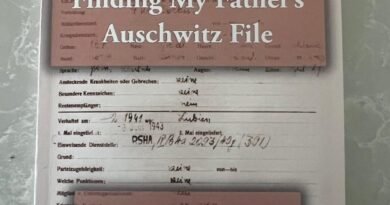Mayoral Race Becomes More Chaotic, Leaving Kingmakers in a Dilemma

The water may still be chilly, but that hasn’t stopped anyone from diving in.
Following City Council Speaker Adrienne Adams’ launch of her last-minute campaign on Wednesday, the New York City mayoral primary has become a battleground. It features the sitting mayor facing off against a former governor, a sitting council speaker, both a current and a former comptroller, along with a mix of progressive candidates.
Who will manage to impose some order amid this chaos?
While voters technically hold the ultimate power, the real influence in Gotham’s elections lies with various special interests, particularly the unions.
These major players boast memberships that number in the tens or hundreds of thousands, wielding enough clout to determine who thrives and who sinks.
Notable kingmakers include 1199 SEIU (the healthcare workers’ union), the 32BJ building-workers’ union, District Council 37 (the largest municipal-employee union), the Hotel Trades Council (which represents hotel workers), and the United Federation of Teachers.
While rank-and-file members have distanced themselves from labor leadership and shifted to the right at the national level, union endorsements continue to carry weight in local races.
Moreover, New York’s workforce is significantly more unionized compared to the national average.
Approximately 20% of the city’s entire labor force is unionized, which is double the national figure.
For public-sector employees, the disparity is even more pronounced: As of 2023, a staggering 95% of the city’s 354,572 government employees belonged to a public-sector union, while only about 25% of federal employees are unionized.
Every candidate wants an ally in Gracie Mansion, but none crave it more than the public-sector unions.
Unlike federal workers’ unions, which negotiate with multiple agencies, nearly all city workers bargain exclusively with the mayor. This unique structure incentivizes them to support candidates who promise lucrative contracts.
For city unions, the mayoral race transcends policy debates and personal rivalries — it fundamentally revolves around financial security.
In municipal elections, a whopping 88% of public employees typically back the candidate endorsed by their union.
Moreover, they are often called upon to volunteer for campaign activities, such as collecting signatures and mobilizing votes for their union’s favored candidate, making these endorsements pivotal.
In the 2013 mayoral primary, the endorsement from 1199 drastically revitalized Bill de Blasio’s campaign, transforming him from underdog to frontrunner, leading to his eventual two terms in office.
In 2021, Eric Adams capitalized on three significant endorsements in March — from the HTC, 32BJ, and DC 37 — positioning him as the front-runner.
New York City’s disappointingly low-turnout primaries can be swayed by just a few thousand votes.
In the 2021 primary, with only 942,031 of 3.76 million registered Democrats participating, Adams secured a narrow victory by a mere 7,197 votes in the final round, before easily winning the general election.
Adams has been generous towards his supporters, granting lucrative contract renewals and hotel deals for migrants during his administration.
However, these same unions have not hurried to back the incumbent who is currently under pressure.
Instead, leaders from 32BJ and DC 37 have reportedly expressed their support for Speaker Adams ahead of her announcement.
From the perspective of union leadership, it’s a strategic quandary: Should they avoid the wrath of former Governor Andrew Cuomo, thus paving his path to victory, or should they take a gamble on a challenger in hope of negotiating a better contract?
The carpenters’ union, who supported Adams in 2021, has already made its move, endorsing Cuomo even before he announced his candidacy.
On the day he officially declared his intent to run, Cuomo visited the headquarters of 32BJ.
On Thursday, Teamsters Local 237, representing approximately 25,000 city government employees, threw their support behind Cuomo as well.
This first endorsement from a public-sector union serves as a significant indicator: It suggests that city employees are unlikely to unite behind either Adams in the upcoming June election, thereby complicating their routes to success.
Meanwhile, progressive candidates in the race, including current Comptroller Brad Lander, socialist Assemblymember Zohran Mamdani, and state Sen. Jessica Ramos (who chairs the Senate Labor Committee), have noticeably not been part of the chatter among the kingmakers lately.
The United Auto Workers Region 9A, which endorsed all three candidates in December, has charted a strategic course for a potential hard-left upset: they are advocating for ranked-choice voting.
This ranked-choice system will enable unions to hedge their bets by endorsing multiple candidates. The UAW is advising its members to not rank either Cuomo or Mayor Adams, allowing their progressive favorites a better chance of winning.
As of yet, the city’s nearly 200,000-strong teachers’ union has not made its endorsements in this election cycle, but historically, the UFT hasn’t supported the winning candidate in a contested primary for decades.
Given its far-left ideology, the teachers’ union might follow the UAW’s strategy and attempt to keep Cuomo and Adams off their members’ ballots altogether, as part of a ranked-choice progressive coalition.
Regardless of how endorsements turn out, the ultimate victor will owe significant debts to the true powers behind the throne, leaving city taxpayers to shoulder the burden.
It’s advantageous to be the king, but it may be even more rewarding to orchestrate the crowning.
John Ketcham is the director of cities and a legal policy fellow at the Manhattan Institute.



